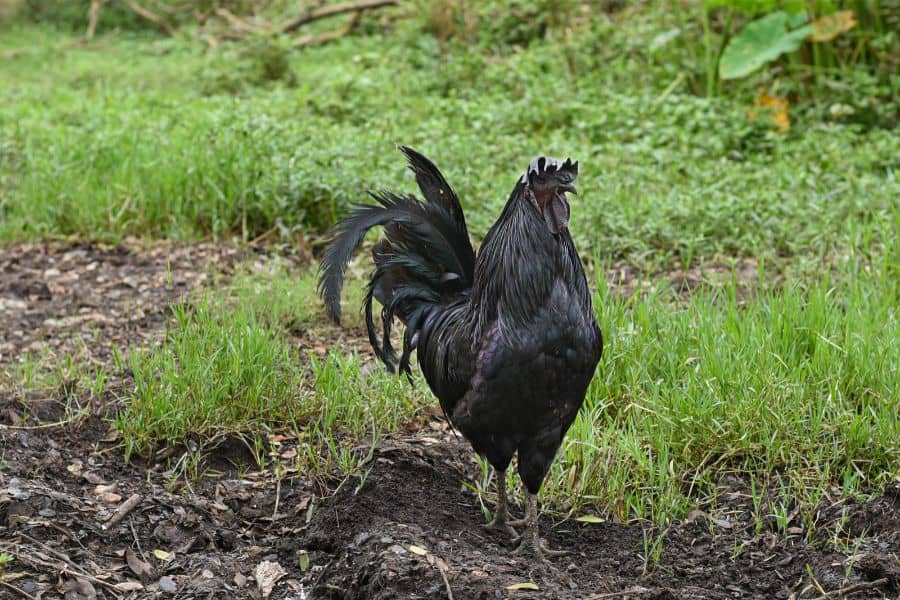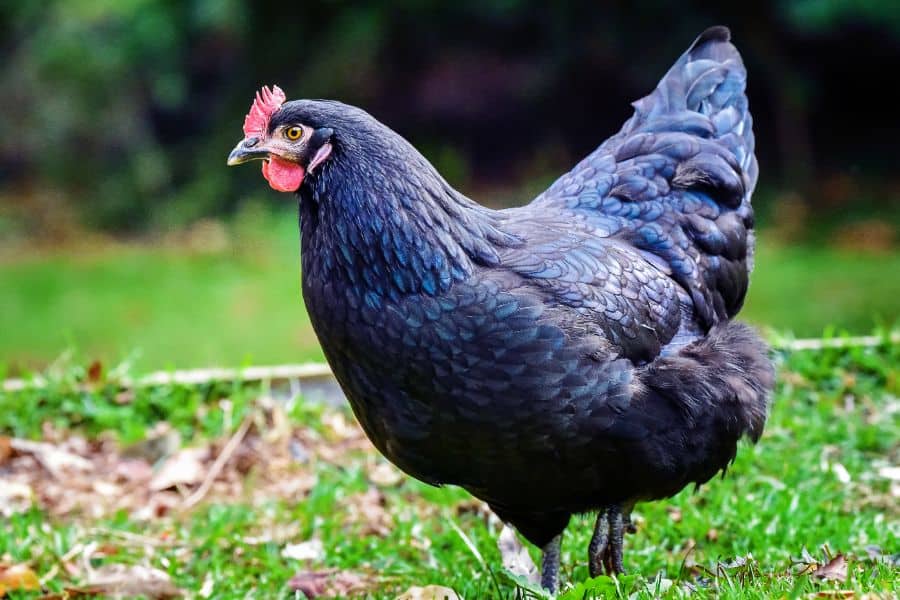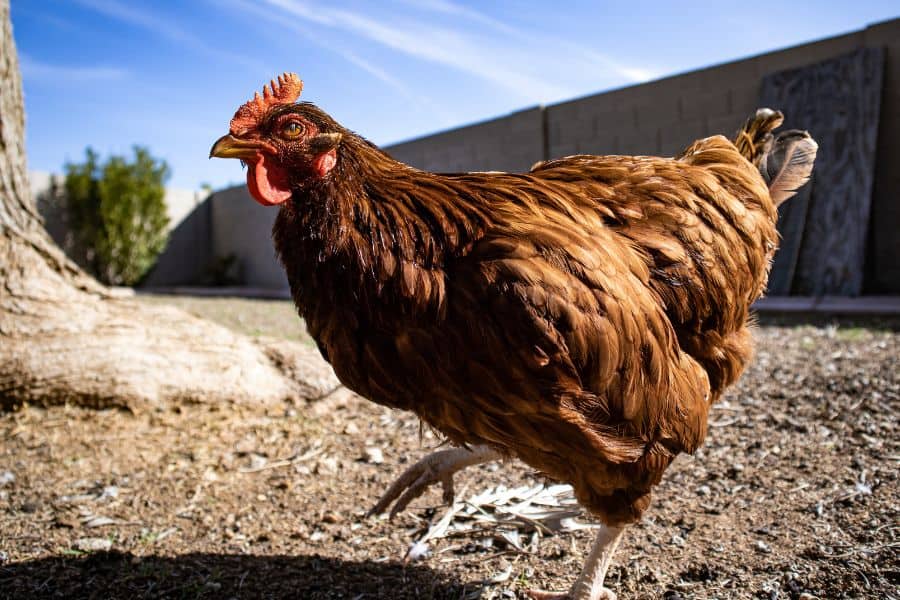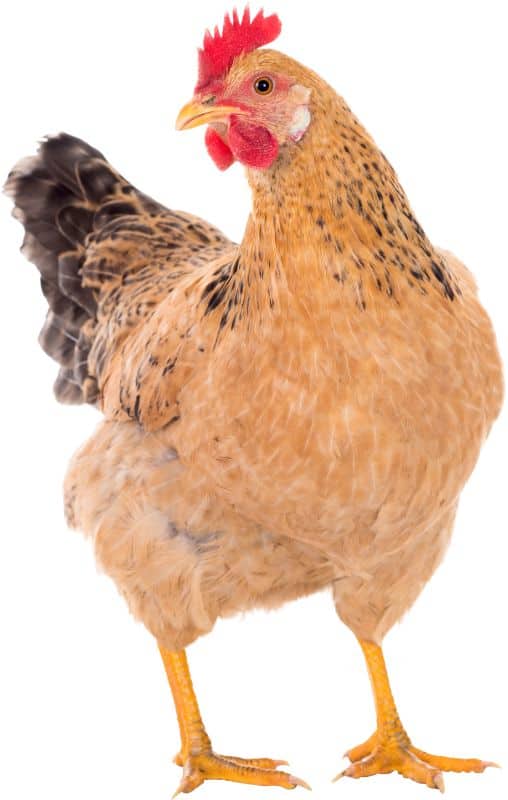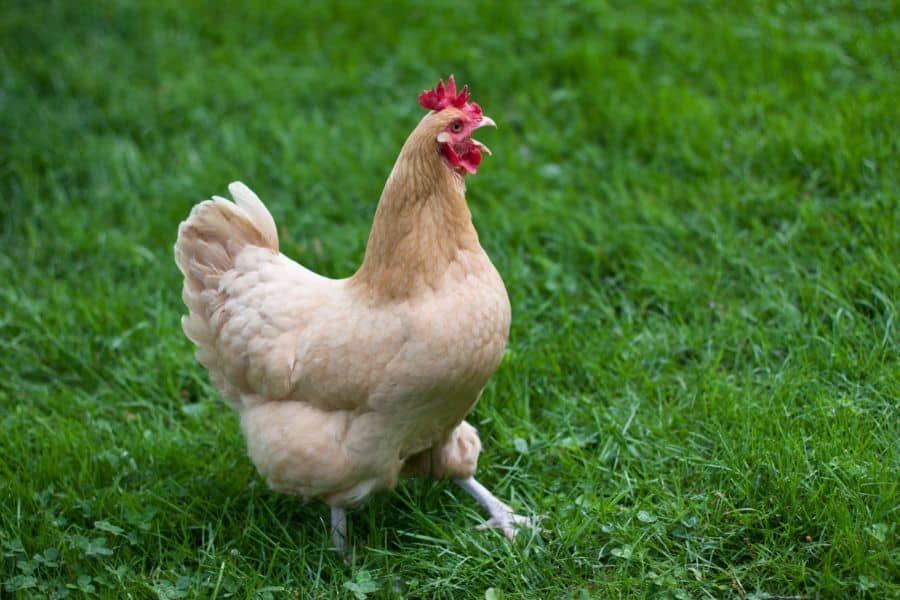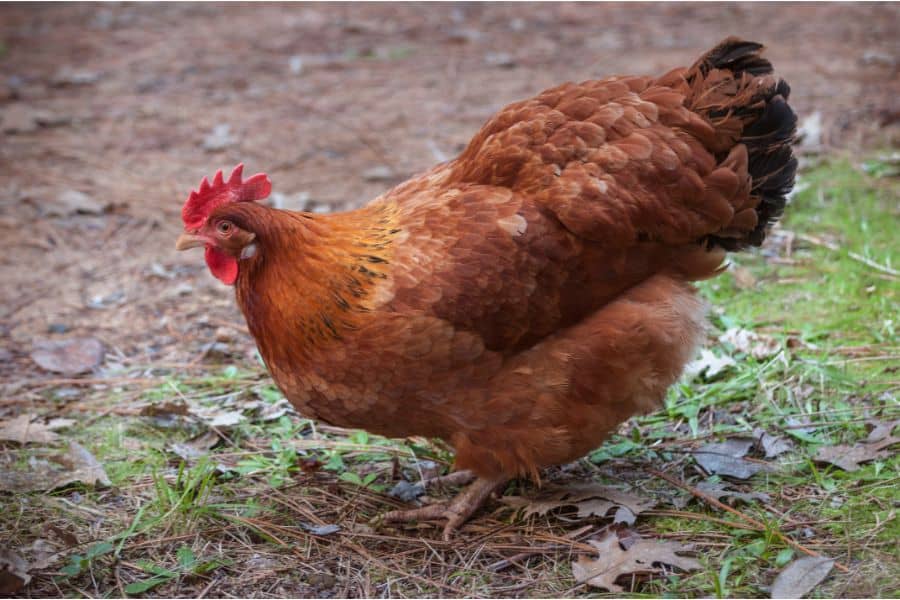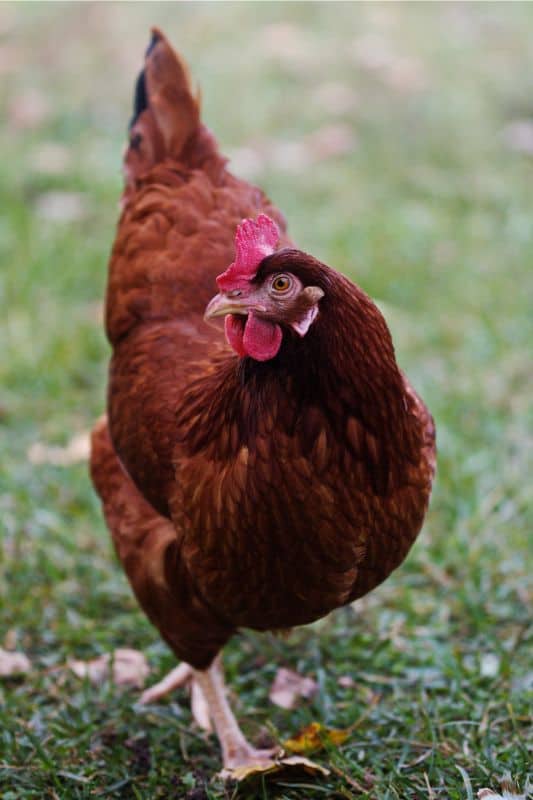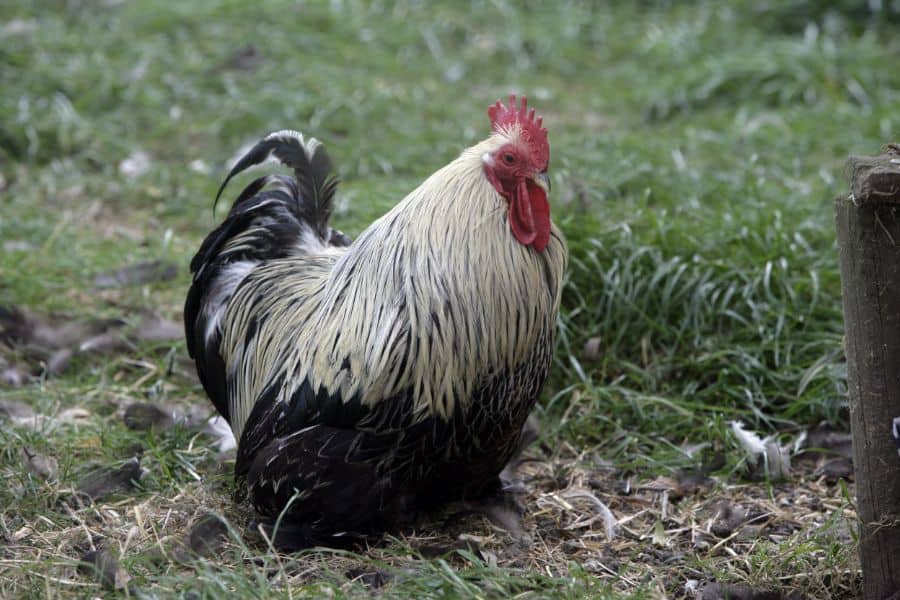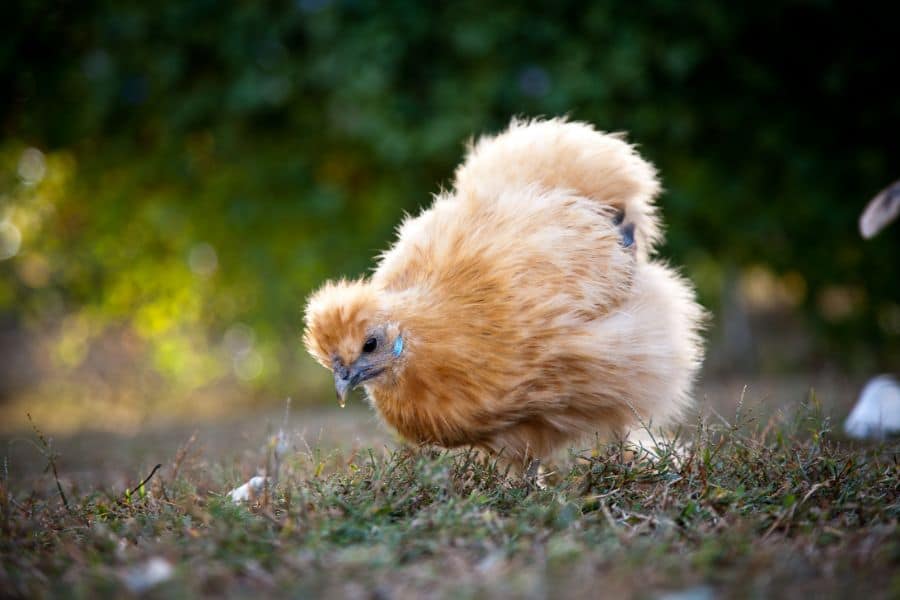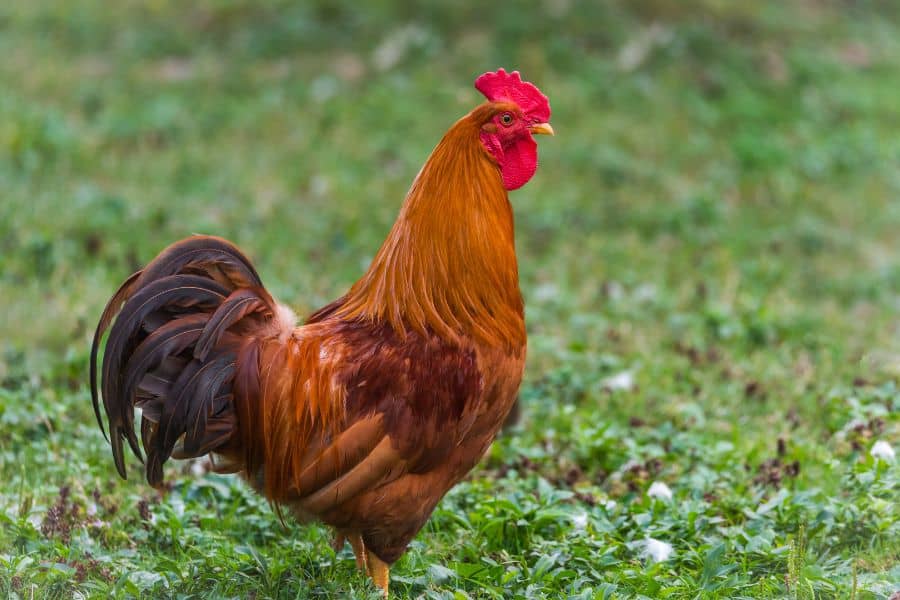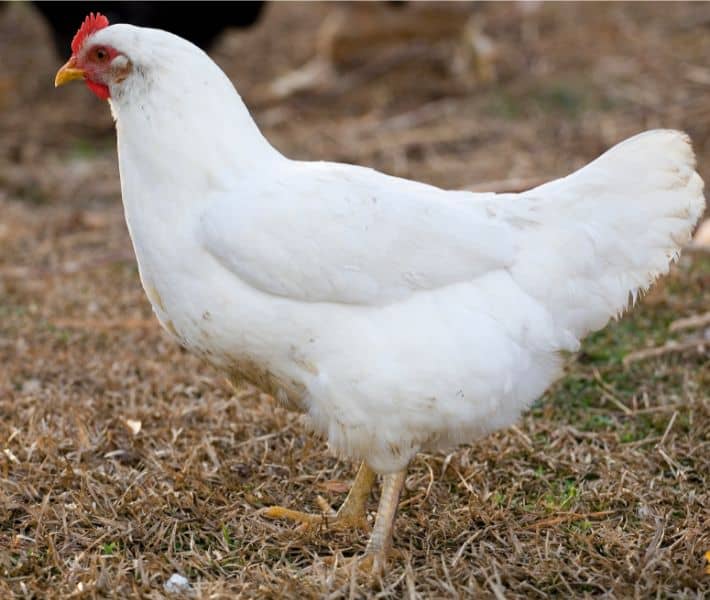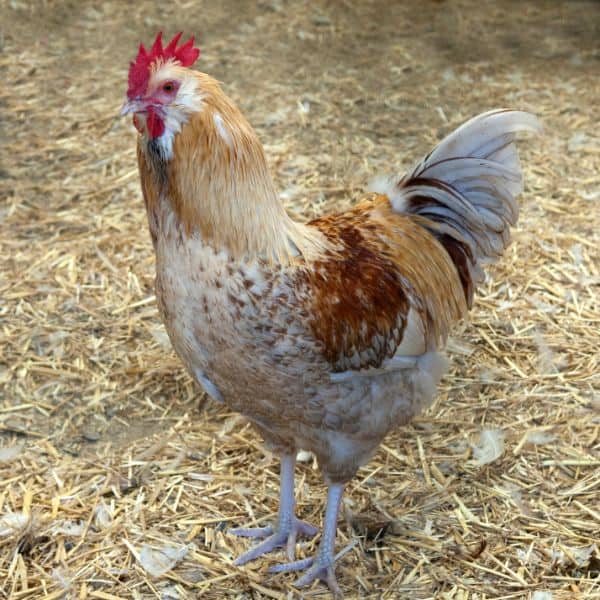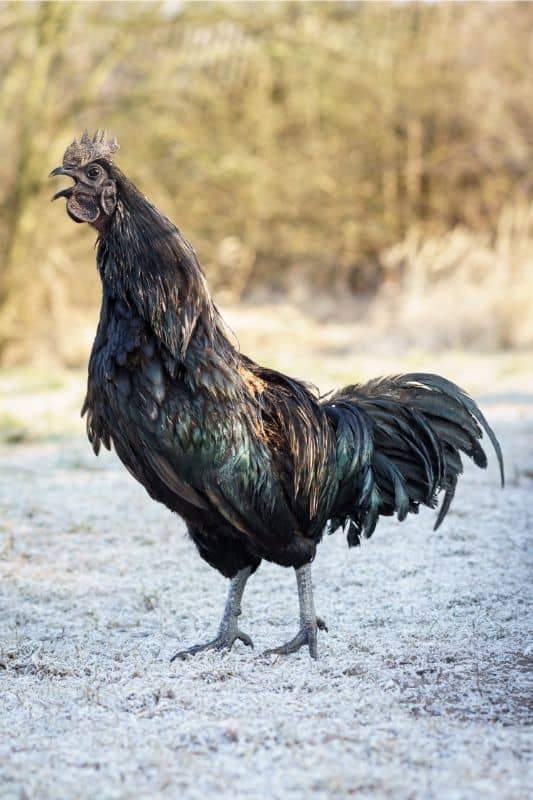If you have ever been curious about the color of your chickens, you’re not alone. Chicken colors are a big deal out here and some enthusiasts don’t think twice about shelling out eye-watering amounts of cash to get their hands on the ‘right’ colored chicken.
The nature of chicken colors, how they come about, and their significance is a complicated yet interesting issues. Colors may be a good way to tell apart your chickens, but they may also tell the tale of your chicken’s origins.
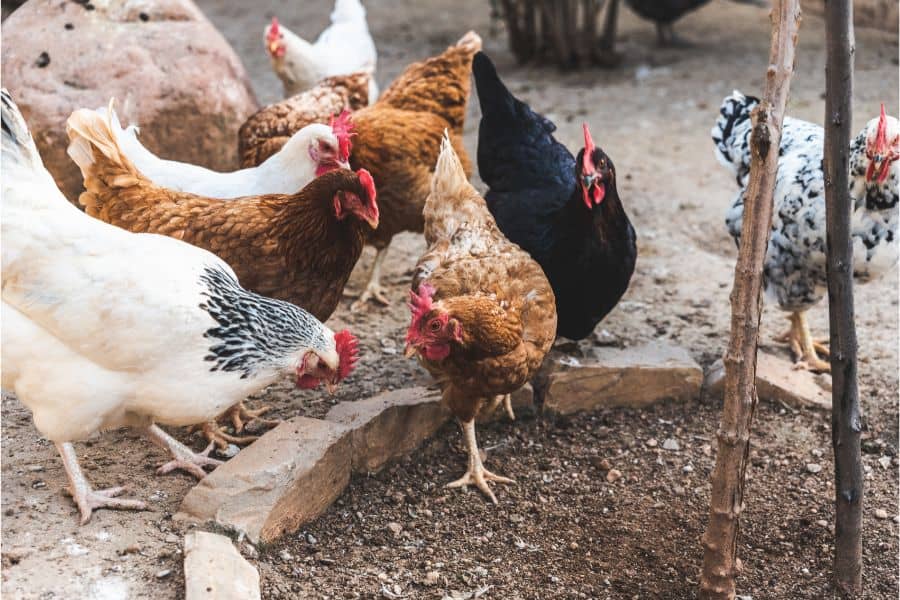
Some owners go to great lengths, controlling how their chickens breed over many years, to try and get chickens of a specific color. Find out below if you should be doing the same or not.
What Chicken Color Refers To
In this scenario, the color of a chicken refers to the color of the feathers or plumage. It has nothing to do with the color of the meat from the chicken or the color of the eggs laid by the chicken.
What Causes Differences in Chicken Colors?
In a nutshell, the different colors of chickens are the result of genetics. Genes affect the colors of chickens in the same way they affect height, pigmentation, hair texture, and other traits in humans.
Surprisingly, at the genetic level, you will only find two color pigments in chicken, and these are red and black. So how do we end up with so many chickens that look vastly different from each other?
The differences we see in the colors of chickens are down to the fact that the two color pigments can be combined, enhanced, muted, or totally absent in any one chicken. Thanks to these effects plus the myriad of feather patterns, there are many variations of chicken colors out there today.
Examples of Well-Known Chicken Colors
If you asked two breeders how many chicken colors there are, you are likely to get two different answers. This is because different feather patterns can lead to two chickens with the same colors looking completely different.
There are, however, certain colors that are well-known among most chicken owners and breeders. These are explained below.
Summary of Chicken Colors:
| Color | Frequency of Occurrence | Associated Breeds Examples |
| Black | High | Silkie, Australorp, Ayam Cemans, Orpington |
| Blue | Low | Silkie, Andalusian, Iowa Blue, Wyandotte |
| Brown | High | ISA Brown, Rhode Island Red, Orpingtons |
| Bay | High | Golden Comet, ISA Brown |
| Buff | High | Buff Orpington |
| Cinnamon | Medium | Cinnamon Queen, Rhode Island Red |
| Chestnut | High | Easter Egger, Rhode Island Red, Buckeye |
| Birchen | High | Marans, Pekin Bantam |
| Columbian | High | Columbian Wyandotte, Columbian Wyandotte Bantam |
| Lavender | Very Low | Orpington, Silkie, Ameracauna |
| Gray | Low | Orpington, Silkie, Wyandotte, Blue Andalusian |
| Fawn | Very Low | Silkie, Wyandotte |
| Red | High | Sussex, Rhode Island Red |
| White | High | White Barnvelder, Plymouth Rock, Orpington, Polish, White Silkie |
| Silver | Low | Polish, Sebright, Black Laced Silver Wyandotte |
| Mille Fleur | Medium | Dutch Booted Bantam, Mille Fleur D’Uccle |
| Salmon | Low | Faverolles |
| Wheaten | Low | Marans, Ameraucanas |
Black
Many chickens will have some black color in their plumage, but only solid black chickens are considered black chickens. Chickens with only one color such as this are known as self-colored.
The black color of this type of chicken comes from the pigment known as melanin. Black chickens are seen across many chicken breeds including Silkies, Australorps, Ayam Cemans, and Orpingtons.
If you’ve been thinking about getting into poultry shows, black chicken may just be what you’re looking for. The feather structure of some black chickens results in an effect known as iridescence which makes them appear to change colors.
- Common breeds: Silkie, Australorp, Ayam Cemans, Orpington
Blue
When the black pigment in chicken is a little diluted, you end up with blue chickens. The blue color is not a true blue and is in fact more of a gray-black color.
These chickens are called blue chickens because their plumage seems to turn blue when the chickens are in the sun. Their feathers also tend to be iridescent just like black chickens.
Blue chickens are also favored as show chickens, but they also make great companions. Breeds that tend to have blue chickens include Silkie, Andalusian, Iowa Blue and Wyandotte chicken.
- Common breeds: Silkie, Buckeye, Orpingtons
Brown
The brown color is one of the most common in chicken and it is the result of the red and black pigments mixing. It is found in breeds that include ISA Brown, Rhode Island Red, and Orpingtons.
There isn’t one distinct brown color when it comes to chicken. Brown may refer to a deep brown, tan, or even a light reddish brown.
- Common breeds: ISA Brown, Rhode Island Red, Orpingtons
Bay
This bay color in chickens has been described as a warm mahogany and is seen in chicken breeds like the ISA Brown. Despite also being a type of brown, what makes these chickens stand out is the golden hue that is also present in their feathers.
There are bay chickens that are darker than others, but the golden hue will still be present in their feathers. The Golden Comet is another breed that is known for bay-colored chicken.
- Common breeds: Golden Comet, ISA Brown
Buff
While we may associate the term buff with an individual who frequents the gym, in chicken this refers to a color that looks like a mix of gold and orange.
These chickens bear some similarity to Bay chickens except the orange color stands out a bit more in their plumage.
Buff Orpingtons are the most obvious example of chickens that showcase this color.
- Common breeds: Buff Orpington
Cinnamon
This is yet another color that a novice may refer to as brown. In chicken, cinnamon refers to feathers that are brown but also have a red hue.
Cinnamon-colored chickens are typically egg-laying varieties such as the appropriately named Cinnamon Queen. Another breed that produces cinnamon-colored chicken is the Rhode Island Red.
- Common breeds: Cinnamon Queen, Rhode Island Red
Chestnut
Yet another of the brown chickens, these chickens are dark brown with a red hue as opposed to cinnamon-colored chickens which are just brown with a red hue.
If you want to have fresh eggs on your breakfast table regularly, you won’t go wrong with chestnut-colored chickens.
- Common breeds: Easter Egger, Rhode Island Red, Buckeye
Birchen
Moving away from the browns, birchen chickens are those that have a silver head and body that is black. The black color extends all the way to the tail.
If you see a birchen-colored chicken, you can be sure its parents also had birchen feathers. A birchen plumage is regularly seen on Marans but it is a feature in several other breeds as well.
The birchen name is a reference to the pattern of the feathers and not the actual color of the chicken.
- Common breeds: Marans, Pekin Bantam
Columbian
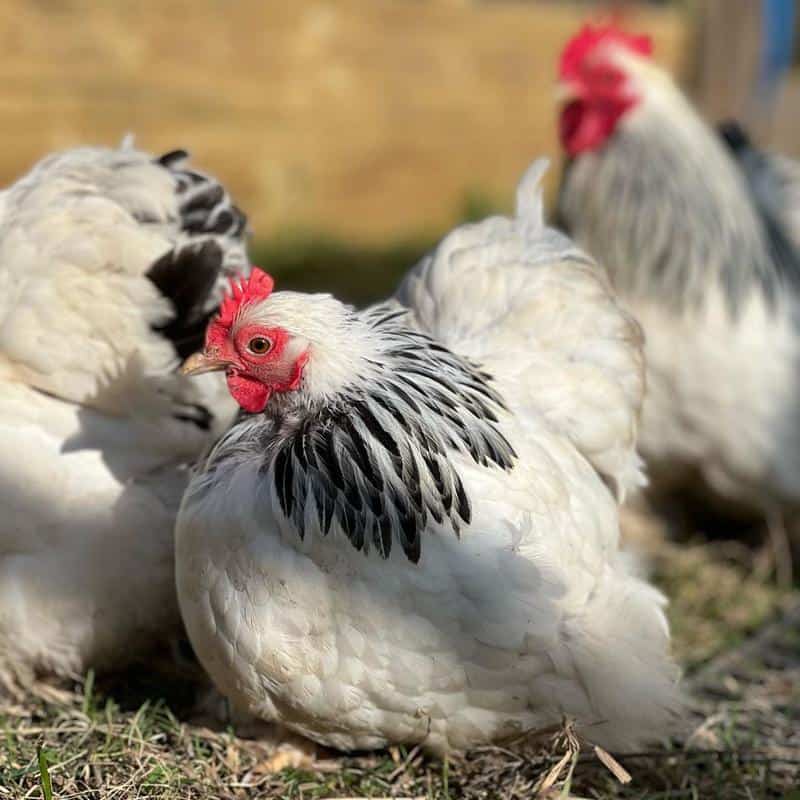
Columbian-colored chicken is also a reference to a feather pattern. These chickens have backs, thighs, and heads that are white, but their necks feature black feathers mixed with white ones.
This feather pattern is not uncommon in chicken breeds. A popular example of a breed with this feather pattern is the Columbian Wyandotte.
A fun poultry fact you can bring up is that the Columbian Wyandotte’s name came from the World’s Columbian Exposition in 1893 where they were first exhibited.
- Common breeds: Columbian Wyandotte, Columbian Wyandotte Bantam
Lavender
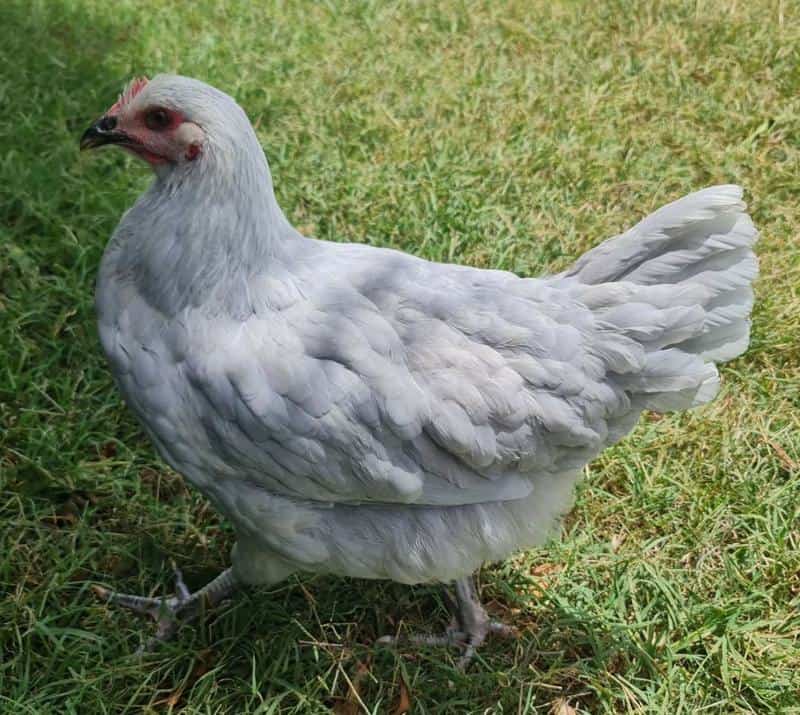
This color has been described as off-white, light gray, or something in between. These chickens’ colors are reminiscent of the hue seen on lavender plants.
This color is unique among chickens and is typically the result of selectively breeding chickens over several generations. These chickens have feathers that are white, and some light black feathers and this combination is what creates the lavender hue.
- Common breeds: Orpington, Silkie, Ameracauna
Gray
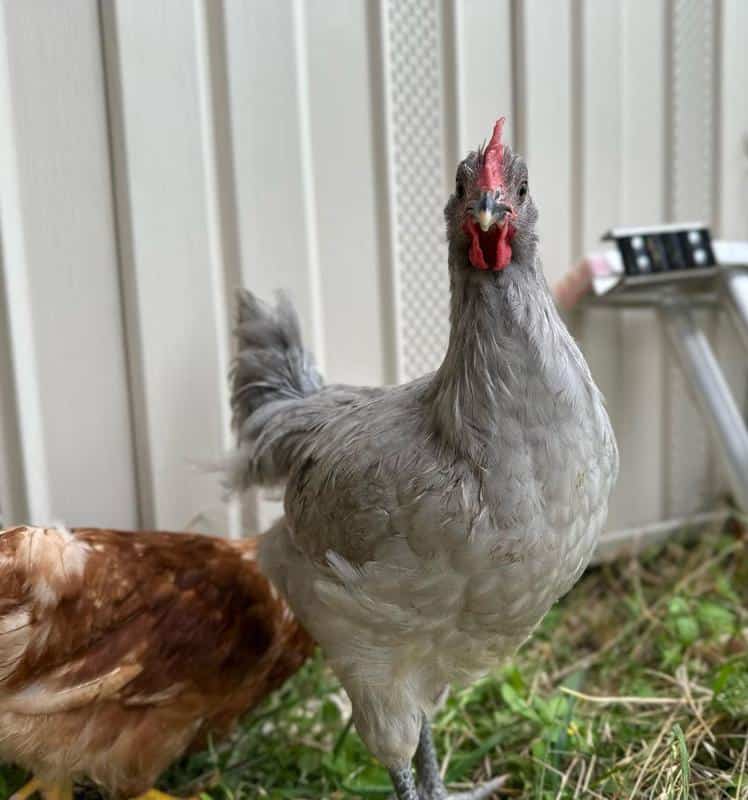
This color is the result of a mixture of light black and white feathers. The feathers may also have lavender and blue hues.
This color is not commonly found in chicken feathers making this color chicken a great choice for anyone who wants a flock that will attract attention. Silkies, Ameraucanas and Australorps will have gray-colored birds.
- Common breeds: Orpington, Silkie, Wyandotte, Blue Andalusian
Fawn
Fawn-colored chickens are a light tan and thus are also considered brown chickens. However, unlike the other brown chickens, fawn chickens are a rarity.
Fawn chickens are given this name because their color is like that of fawns i.e., baby deer. Wyandottes and Silkies are among the breeds that will have this color.
- Common breeds: Silkie, Wyandotte
Red
This is one of the classic colors of backyard chicken. Well-known egg-laying breeds like the Sussex and the Rhode Island Red will have red chickens.
This color is more of a reddish brown so you may easily confuse red-colored chickens with bay, cinnamon, and chestnut chickens. The main difference between these four chicken colors is the degree of darkness in their feathers.
- Common breeds: Sussex, Rhode Island Red
White
If you come across a white chicken, this means it doesn’t have a color pigment in its feathers. These chickens are quite common and include breeds like the White Barnvelder, Plymouth Rock, Orpington, Polish, Jersey Giant, White Silkie, etc.
White-colored chickens are bred for different purposes depending on their breed. There are white chickens that will give you plenty of breakfast eggs, while others you’ll want to take to your local poultry show.
- Common breeds: White Barnvelder, Plymouth Rock, Orpington, Polish, White Silkie
Silver
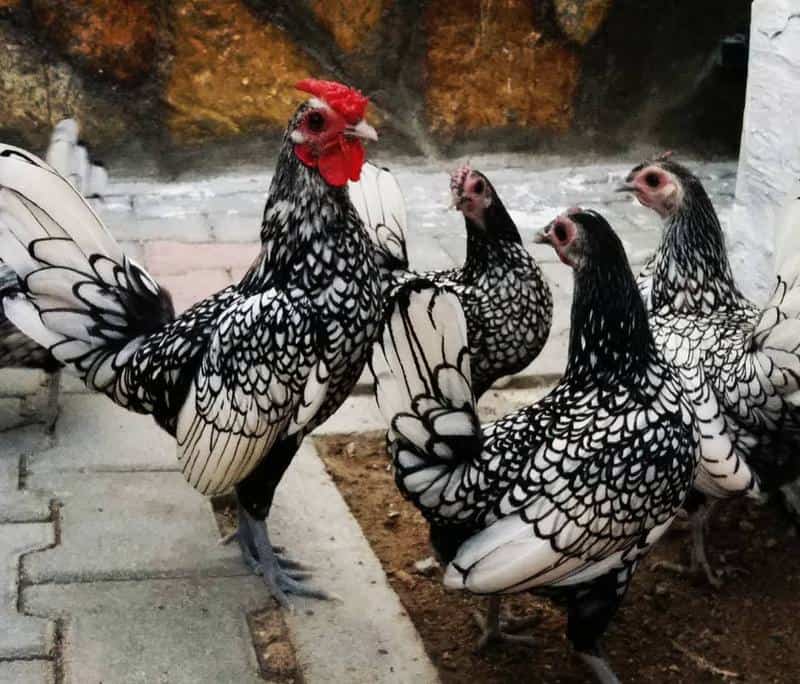
The silver color is used for chickens with white feathers, but only those that have a metal-like sheen to their look. Like with blue and some other unique colors, iridescence is what causes this metallic sheen.
This silver color doesn’t cover the whole body of the chicken and the feathers will feature other colors including black. However, the base color of the feathers will be silver.
Silver-colored chickens make for great show birds. Some of the breeds that can give you silver chicken are the Polish, Sebright, and Black Laced Silver Wyandotte.
- Common breeds: Polish, Sebright, Black Laced Silver Wyandotte
Mille Fleur
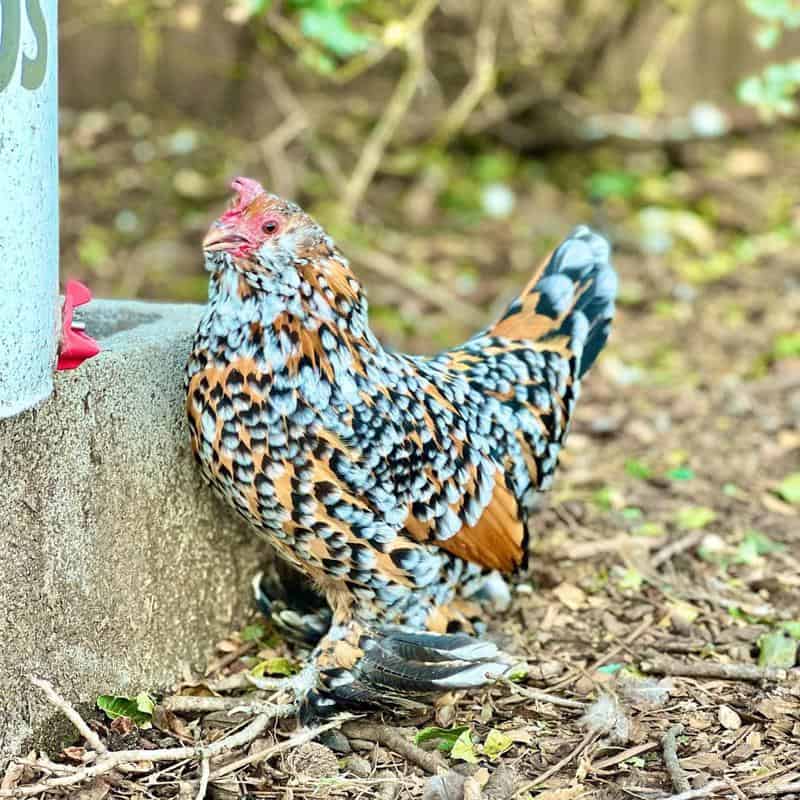
Mille Fleur chickens don’t have to try too hard to stand out. Mille Fleurs is French for a thousand flowers and one look at this type of chicken explains how they got the name.
These chickens have cinnamon, red or chestnut feathers with black trim around the feather’s edge. The feathers also have silver bits.
These chickens are among the most colorful and are typically bred for their aesthetics. These show birds are not common but can be found in breeds like the Dutch Booted Bantam and the Mille Fleur D’Uccle.
- Common breeds: Dutch Booted Bantam, Mille Fleur D’Uccle
Salmon
This color is also quite distinct among chickens. The salmon color has a pinkish appearance, doesn’t cover the whole bird, and usually occurs in large patches.
Salmon-colored chickens are typically good for egg-laying and include breeds like the Faverolle.
- Common breeds: Faverolles
Wheaten
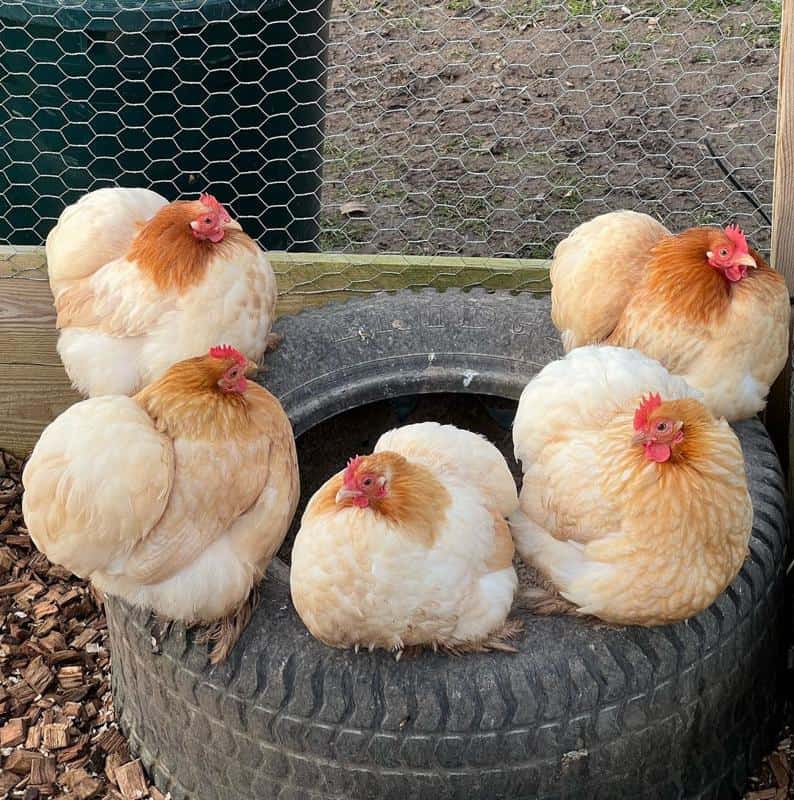
Just as the name suggests, this color is like that of wheat grains. This means the color can be seen as a pale yellow or a beige.
This color isn’t the result of iridescence despite its stunning look. The gold-yellow color of the plumage comes from the color pigments in the feathers.
Wheaten Marans are one example of chicken breeds that will have the wheaten color in their plumage.
- Common breeds: Marans, Ameraucanas
Chicken Colors in Roosters Vs Hens
In human beings, genetic differences manifest themselves differently in males and females. Some genes are also more likely to be present in one sex compared to another hence why you probably don’t have many bald aunts.
As seen in many other birds, the plumage of roosters is much brighter and more colorful compared to the plumage of hens. This is because it is the males who need to attract their mates and not the other way around.
If you’ve ever wondered why a rooster looks more like a show bird compared to a hen, that is the reason why. However, the color difference between roosters and hens goes further than the males having punchier colors.
A wheaten-colored rooster will be a darker gold and have hues of orange and amber while the wheaten hen will be a lighter shade. A birchen-colored rooster has the silvery-white feathers extending all the way to its back while in the females it will only be on the head and hackles.
This means that colors manifest in different intensities in roosters and hens, and in some cases, will show up on feathers in different parts of the chicken’s body.
Does Chicken Color Affect Egg Colors?
Depending on where you’ve lived, you may not be aware that chicken eggs don’t just come in brown and white. Chicken eggs can also be blue or green and some would make an argument for pink and a few other egg colors as well.
These other egg colors don’t show up with the distinctiveness of brown or white. Just as with the chicken color, the blue or green color in the eggshell is a bit muted.
Although there might be coincidences, there is no link between the color of a chicken and the color of the eggs it lays. The colors of chicken eggshells are mainly determined by the genetics of the breed.
If you bought a blue hen expecting to get some blue eggs, you may be in for some disappointment. Apart from the breed, other factors can cause differences in the color of eggs e.g., diet, age, stress, and environment, but don’t expect a dramatic difference.
Also Read: Top 12 Largest Chicken Breeds
Are Chickens the Same Colors When Freshly Hatched?
You have probably seen more than a few yellow chicks but how many yellow hens have you seen? Yellow chicks end up white and this is just one of the reasons why a novice will struggle to determine the future color of a freshly hatched chick.
The color of a chick can provide a good idea of what color the chick will grow up to be. However, it can be challenging for a novice to know what to look for and correctly determine the future color of a chick.
The easiest way to know what color a chick will be in the future is to look at the color of its parents. However, there is also a chance that a recessive gene from each parent will give you a chicken color that looks nothing like either parent.
Blue Chicken Genetics
An interesting way of understanding what it takes to achieve specific chicken colors is to consider the blue chickens. Not all blue chickens are the same because there are those that genetically breed true and those that don’t.
A blue chicken is said to genetically breed true if the blue parents also produce blue or lavender chicks 100 percent of the time. These breeds are also called self-blue chickens.
Attaining a self-blue chicken requires breeding chickens selectively for multiple generations. It takes less work to get a blue-colored chicken than it does to get a blue-colored chicken that is also sure to produce blue offspring.
Additionally, the range of colors that are considered blue is wide. Some blue chickens have a very light hue while others are so black it may be difficult to distinguish them from black chickens, especially as chicks.
Unique Chicken Breed Colors
Although there were a few rare chickens mentioned above, there are situations that give rise to chickens with even rarer color patterns. Two examples of chickens with these extremely rare color patterns are the Ayam Cemani and albino chickens.
Ayam Cemani
If you saw images of an Ayam Cemani chicken on the internet, you would be forgiven for thinking the image was photoshopped or even generated by AI. These chickens don’t just have black feathers, they are black all the way down to their bones and internal organs.
Check out these stunning black chickens in this video.
The Ayam Cemani gets its color from a gene that causes hyperpigmentation. It is from Indonesia and chicken aficionados are said to be paying thousands of dollars to get their hands on just one of these birds.
Albino Chickens
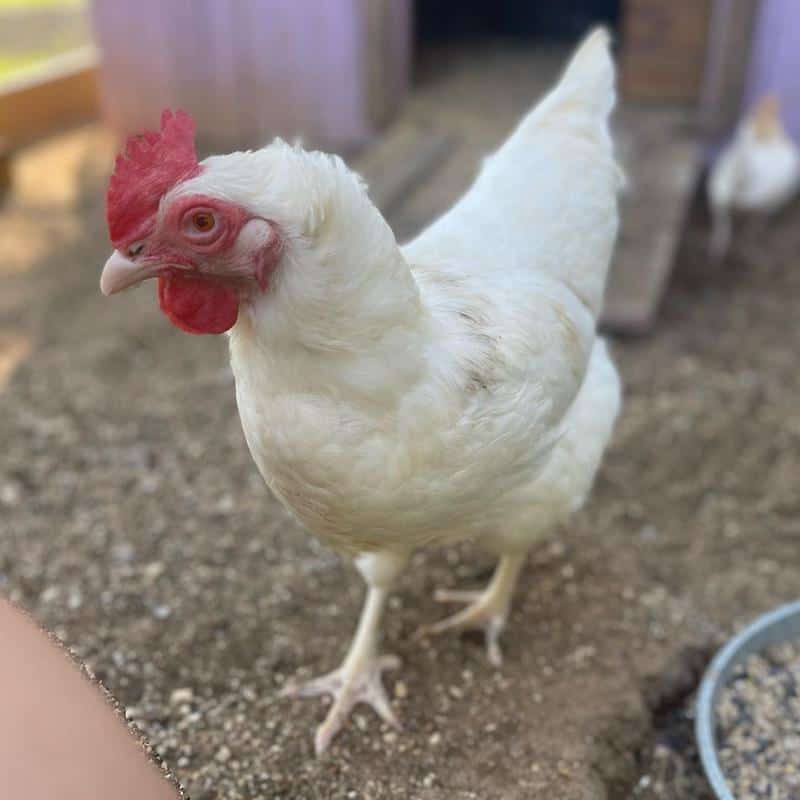
Albinism is a very rare condition in chickens, but it has been known to occur. Just like in human beings, chickens with albinism have a complete lack of melanin making their feathers white.
Albino chickens are quite similar to white chickens which makes it possible for an albino chicken to go unnoticed. The main difference between white chickens and albino chickens is the fact that albino chickens have red eyes while regular white chickens have darker eyes.
Other differences you may notice are the paler combs and white feet and beaks. Albinism can occur in any breed of chicken, but it is a very rare condition.
Also Read: Chicken Breads with Feathers on Feet
Why Does the Color of Chicken Matter?
The importance of chicken color will vary depending on the chicken owner. If you keep chicken purely for aesthetic reasons, the color will be one of your primary considerations.
However, even for those not interested in aesthetics, chicken colors give a good indication of the chicken breed. This means that you can easily determine if a specific chicken will be good for laying eggs or for meat production just by looking at its color.
However, crossbreeding has given rise to different chicken colors with different feather patterns. This means color alone may not be a fool-proof method of determining a chicken’s breed.
